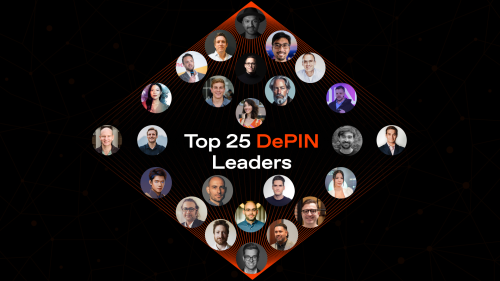If you’re reading this, chances are your job and your life depend on cloud computing. After all, you’re reading a Web3 magazine. If you are a developer, broadcaster, digital artist, entrepreneur, or movie studio, your job definitely depends on it.
To you, the Internet is as critical infrastructure as roads are to everyone else. But two-thirds of your online world belongs to three powerful companies.
And really – it’s up to these Silicon Valley players to decide whether you can use their data highways or not. Usually, however, they don’t mind. Tolls are high – Amazon Web Services (AWS) is Amazon’s most profitable segment.
But should you worry about this enormous concentration of power? The blockchain community does and is challenging Silicon Valley with decentralized infrastructure.
And we have some good news. Our latest report suggests that they stand a chance to compete.
We’ve distilled our findings to explain what decentralized cloud computing still needs to perfect to master this challenge.
What is decentralized cloud computing, and who is it for?
Imagine if, instead of AWS hosting the Internet, individuals and SMBs could collaboratively build cloud computing networks. They’d use the hardware at hand and earn a little extra from their infrastructure.
DePIN projects turned this idea into a reality. And that reality has many benefits, not just for infrastructure providers.
The main advantage of decentralized cloud computing is competitive pricing. It promises 5 times cheaper computing and up to 90% cheaper video streaming.
That alone could be a game-changer. After all, computing is the digital kindling that fuels gaming, medical research, augmented, mixed, and virtual reality and visual effects.
GPUs are also the lifeblood of AI development and “[…] considerably harder to get than drugs”. (Elon Musk must know.)
Last but not least, cloud computing is more than a service. It really ensures the right to access information (Declaration of Human Rights – Article 19). Attention policymakers – this one’s for you.
It’s the fuel for exponential technologies and a guardian of human rights. How do we decentralize it?
How does decentralized cloud computing work?
It all starts with a project that builds a DePIN platform. This platform is an application deployed on top of an existing layer 1 smart contract platform such as Solana or Ethereum or a layer 2 scaling platform such as Lisk.
Decentralized cloud computing projects then need to incentivize individuals and SMBs to plug their infrastructure into their DePIN platform. This is usually done via token incentives.
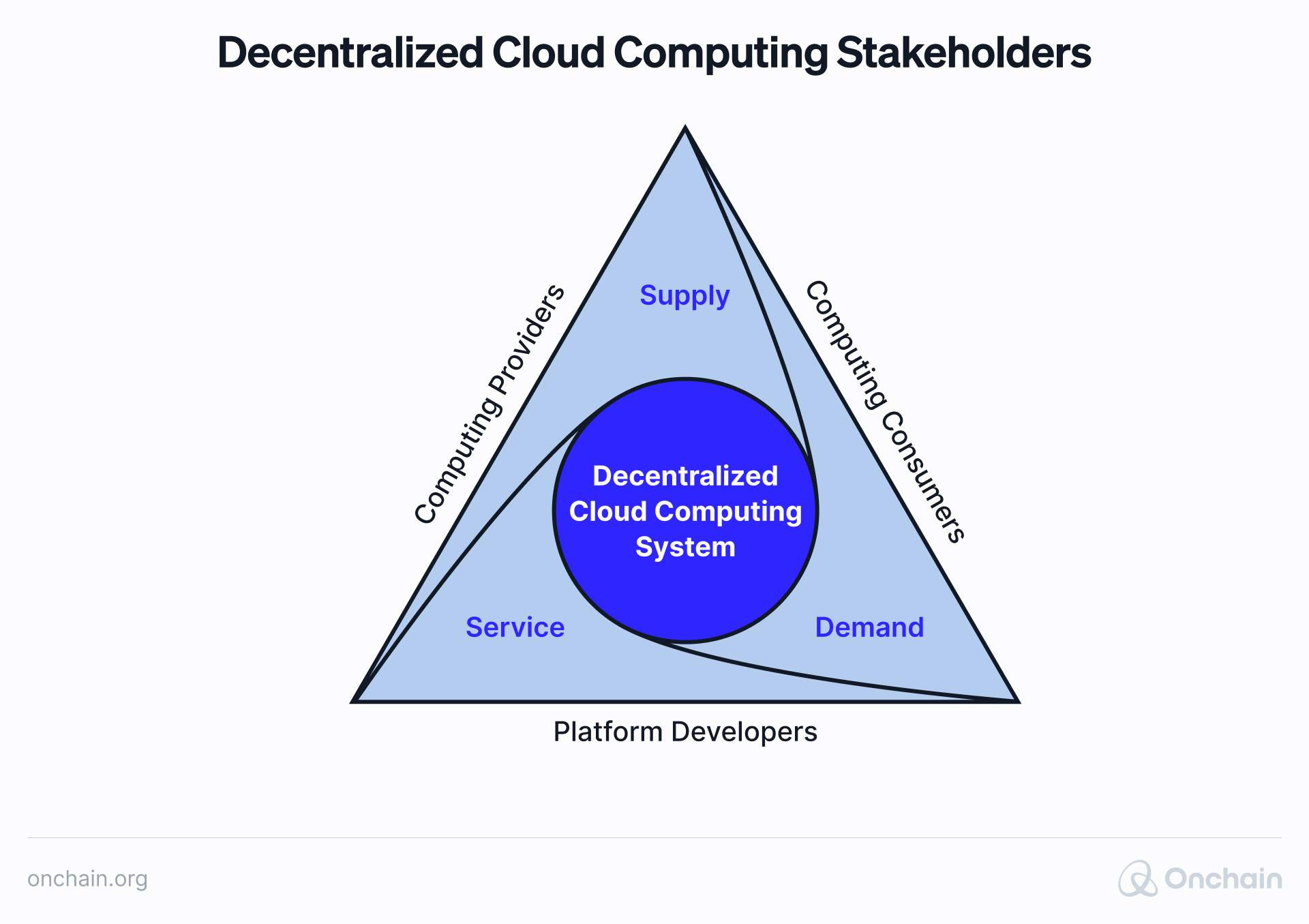
The platform then connects infrastructure providers with users in need of computing power. It functions as an automated marketplace. It tracks compute production and consumption to facilitate financial transactions between the parties.
Drugs are easy to get – the decentralized cloud computing opportunity
It’s impossible to leverage all the GPUs in the world efficiently without some sort of decentralized system that allows them to be tracked and manage
Jules Urbach – Founder of Render Network
The idea is simple. At any given time, a significant amount of computing power is sitting idle while others could be using it. If blockchain can bring both sides together, it’s a win-win for everyone.
The opportunity here is to penetrate a market dominated by the big players of Silicon Valley.
It’s worth taking a minute to let that sink in. Microsoft and the Web2 Goliaths Amazon and Google share 66% of the global market. Silicon Valley’s cloud infrastructure brought $270 billion in revenues in 2023.
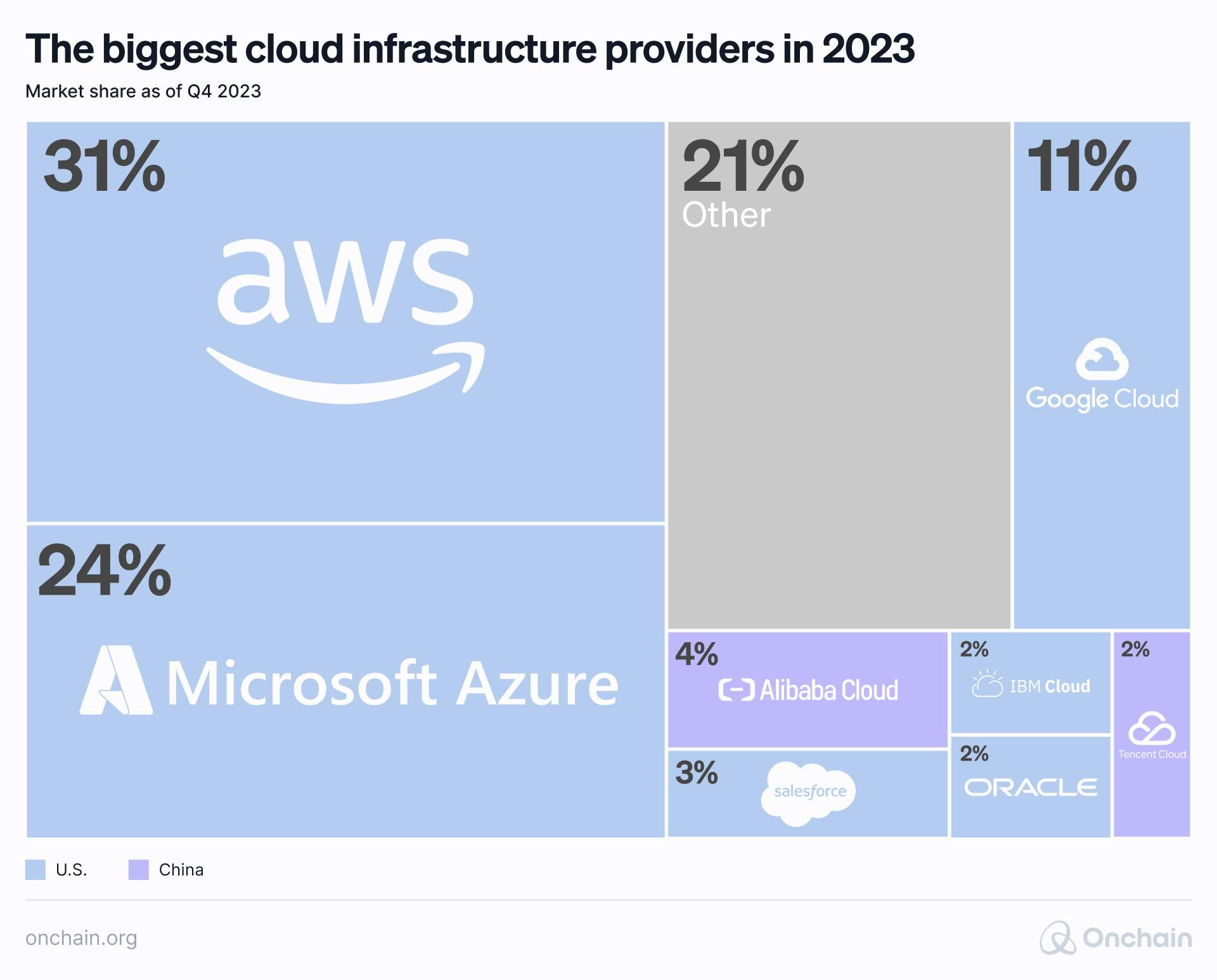
Great idea – or head in the clouds?
The answer is both. But, of course, it’s not that simple. Because what we are really looking at is a David vs. Goliath scenario.
Decentralized computing vs. centralized computing
Goliath is powerful, well-established, and has vast resources and infrastructure. Vast as in Microsoft and OpenAI are building a $100 billion supercomputer called Stargate that’s set to be operational by 2028.
You won’t beat that. But blockchain empowers you to answer with agility and innovative technology.
At the same time, it gives you a great vision – if you care about human rights.
The Ethics of the Internet and Human Rights
The Internet was created as a decentralized network to fight against centralization, right – the threat of a central entity going down and affecting the communications network. But over time, it got increasingly centralized and now the landscape looks like 80% or so of cloud computing, which is a backbone for the Internet, is controlled by four companies.
Greg Osuri – CEO of Akash
The magic of decentralized cloud computing solves problems inherent in centralized models. These include single points of failure, privacy concerns, and data monopolization.
What does this mean in practice? Let’s take democracy as an example.
In 2024, 49% of the world’s population will have the right to vote for a new government. Of those, 2.8 billion people live in countries with a history of Internet shutdowns – that’s ⅓ of our population. The stakes are high.
Decentralized cloud computing’s answer is censorship resistance, resilience, and security – the core values of Web3.
If these values are properly communicated, they could attract people beyond the Web3 bubble. If history teaches us anything, it’s that people do demand human rights after all.
One thing that definitely attracts consumers is value for money.
Tap into idle supply and undercut Web2
Utilizing idle GPUs by connecting them to a DePIN system, as Jules Urbach suggests, does indeed seem to slash computational costs. At least the example of Akash suggests this.
Akash is a decentralized computing marketplace. As of March 30, 2024, the platform offers the H100, Nvidia’s latest state-of-the-art GPU (the one Elon was referring to), for 84% less than AWS.
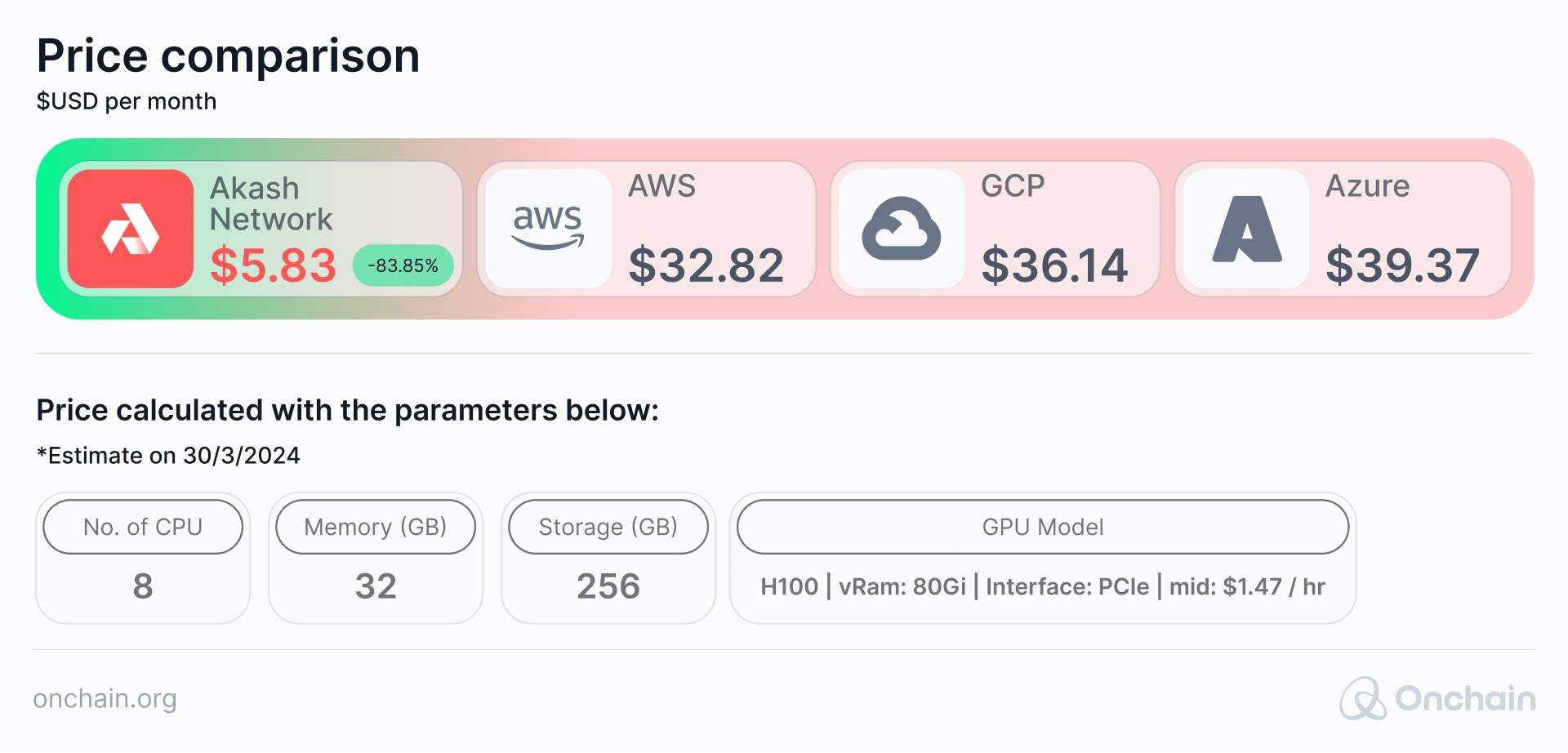
Lowering the cost of computing lowers the barriers to entry for various jobs and industries. Meanwhile, infrastructure providers have the opportunity to earn from their idle computing resources.
Imagine, if only for a second, the profits (and power) of Silicon Valley spread around the globe.
Now take another second to imagine what decentralization could mean for our planet.
AI won’t run on solar – the renewable energy factor
If we continue with the existing trajectory of compute energy, by 2040, we are supposed to hit the world’s energy production capacity.
Bilge Yıldız – Professor of Nuclear Science, Materials Science and Engineering at MIT
Sounds insane, doesn’t it?
Microsoft illustrates this insanity perfectly. It has yet to find a stable five-gigawatt (GW) energy source for its Stargate megaproject. (A typical nuclear reactor produces 1 GW of power.)
Meanwhile, Hackernoon reports that global GPU utilization averages less than 15%, yet idle GPUs still consume significant amounts of energy. Data centers cannot simply shut off their cooling systems, either.
Meanwhile, decentralized cloud computing can run on renewable energy at scale.
Leveraging existing infrastructure – an ecological design
“Low wages, water shortage, and acidified landscapes: Mining critical raw materials endangers human rights and the environment” is the punchy introduction to a DW article.
Engaging otherwise idle GPUs does more than lowering electricity bills. The idea to produce less and use more is an ecological decision.
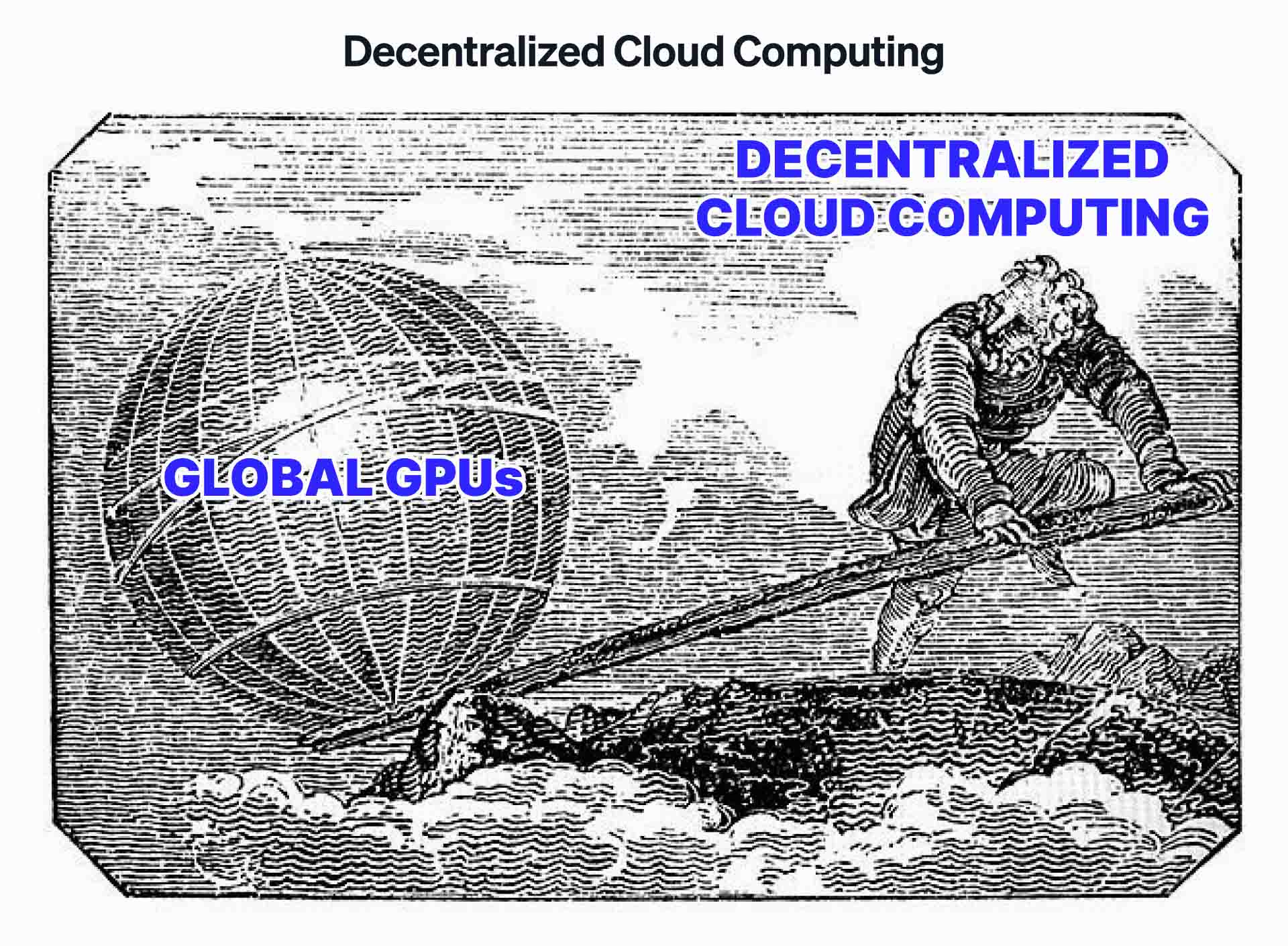
It sounds too good to be true. But there is – of course – a catch.
How to scale a network when you cannot control the supply
Scaling a decentralized platform is tricky – at least initially.
Centralized providers are established, can predict demand, and plan their supply accordingly.
Decentralized cloud computing platforms are just at the beginning of a long and steep adoption curve. And thus they rely on compute providers who join their network – and stay.
Providers stay motivated by token rewards, which often come from token inflation. If other projects offer higher incentives, that threatens service reliability.
Walking down DeFi Summer’s memory lane right now?
The opportunity cost calculation for GPU providers
Token inflation is not a sustainable solution. Platforms need to attract stable demand so that GPU providers can calculate their opportunity costs.
The best approach is to meet current market needs with solutions that outperform existing ones. This includes defining a target niche. Then communicate your benefits loud and clear to attract your innovators and early adopters.
Now it’s time to cross the chasm.
Crossing the chasm – the decentralized computing challenge
“Crossing the Chasm” is a well-known term among marketers involved in the technology and innovation sectors.
It describes the difficulty of bridging an adoption gap between your early adopters and the mainstream or early majority
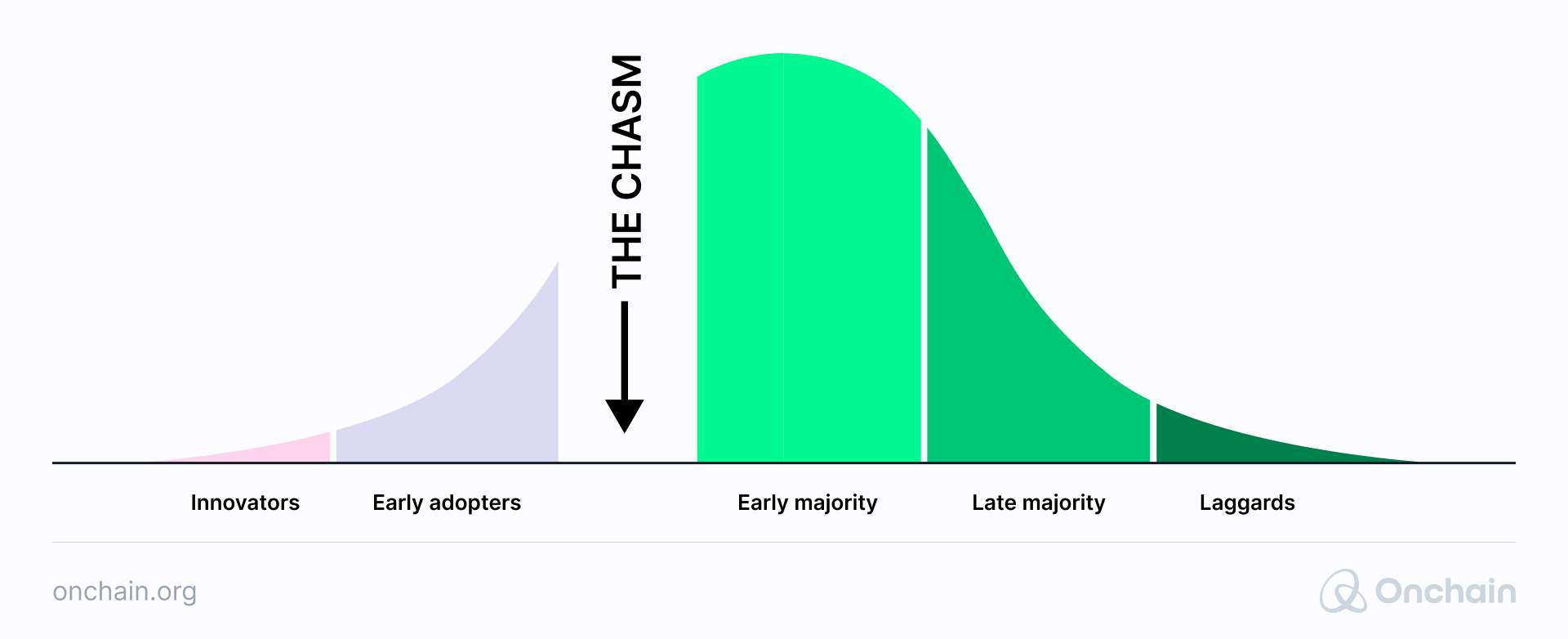
The challenge here is that Silicon Valley’s competitors have established themselves as reliable infrastructure providers. There’s little incentive for risk-averse, pragmatic users and companies that value reliability and quality to switch to a cheaper, idealistic solution.
Step by step, you need to establish yourself in a niche where you can outcompete the big guys before you reach the early majority.
How decentralized cloud computing can cross the chasm
- Identify a specific niche section and demand vector within the mainstream market. This group should see strong benefits in your network and be homogeneous enough to target with a tailored marketing message.
- Position yourself as the leader in this specific market.
- Use your new user base to cross the chasm as you build out your product. (additional features, customer support, integration with other products).
- Meet the needs of and position the product for the mainstream market. Emphasize practical benefits over technical features.
Decentralized computing use case example – Render Network
OTOY Inc. is a technology company that develops rendering and animation software for next-generation media. The company recognized early on that costly and time-consuming rendering processes were a bottleneck for digital artists and studios.
The demand for computing power was so obvious that in 2009, OTOY came up with the idea of leveraging all the GPUs in the world. In 2020, the Render Network went public.
The decentralized network of consumer GPUs is vertically integrated into its OctaneRender application and even similar third-party products.
For an artist, the workflow is straightforward:
- Prepare your scene
- Export it as an ORBX file (which contains your scene data)
- Upload the file to the Render Network portal
- Set the rendering parameters
- Pay with PayPal, Visa, Mastercard, or Metamask
- Start rendering
- Receive the output
Did you notice anything? There are no tokens, blockchains, or Web3 unless you want them. The technology doesn’t dominate the UX; it’s just what makes the process 20 times faster.
This is not a complicated process for a digital artist. But shaving a few hours off the rendering time can mean the difference between making a deadline or not.
Render hasn’t reached an early majority yet, but it’s doing everything right to get there. The next step for Render is to add more features.
In March 2024, OTOY announced a partnership with Stability AI to optimize Stability AI’s models to run on the Render Network. This native integration allows Stability AI models to integrate with 3D content workflows in more than 26 major 3D software tools.
It’s time for DePIN to shine
DePIN enables us to give the world what it can’t get enough of – GPU computing power. It’s a real chance for blockchain to show the world its potential in real-world applications.
One question we couldn’t answer is how much unused GPU power exists. Could decentralized networks ever reach the scale of a Stargate supercomputer? It’s written in the stars.
But it’s not one or the other. Rather it’s about offering sustainable, effective, and affordable solutions that many can benefit from, rather than just a few.
Now let’s look at how decentralized VPNs are changing the way security and privacy work. They solve many of the concerns about centralized VPNs, including data breeches and hacking, and there’s plenty of room for growth in the space. That’s next in this Learning Track — click the arrow below to progress.


